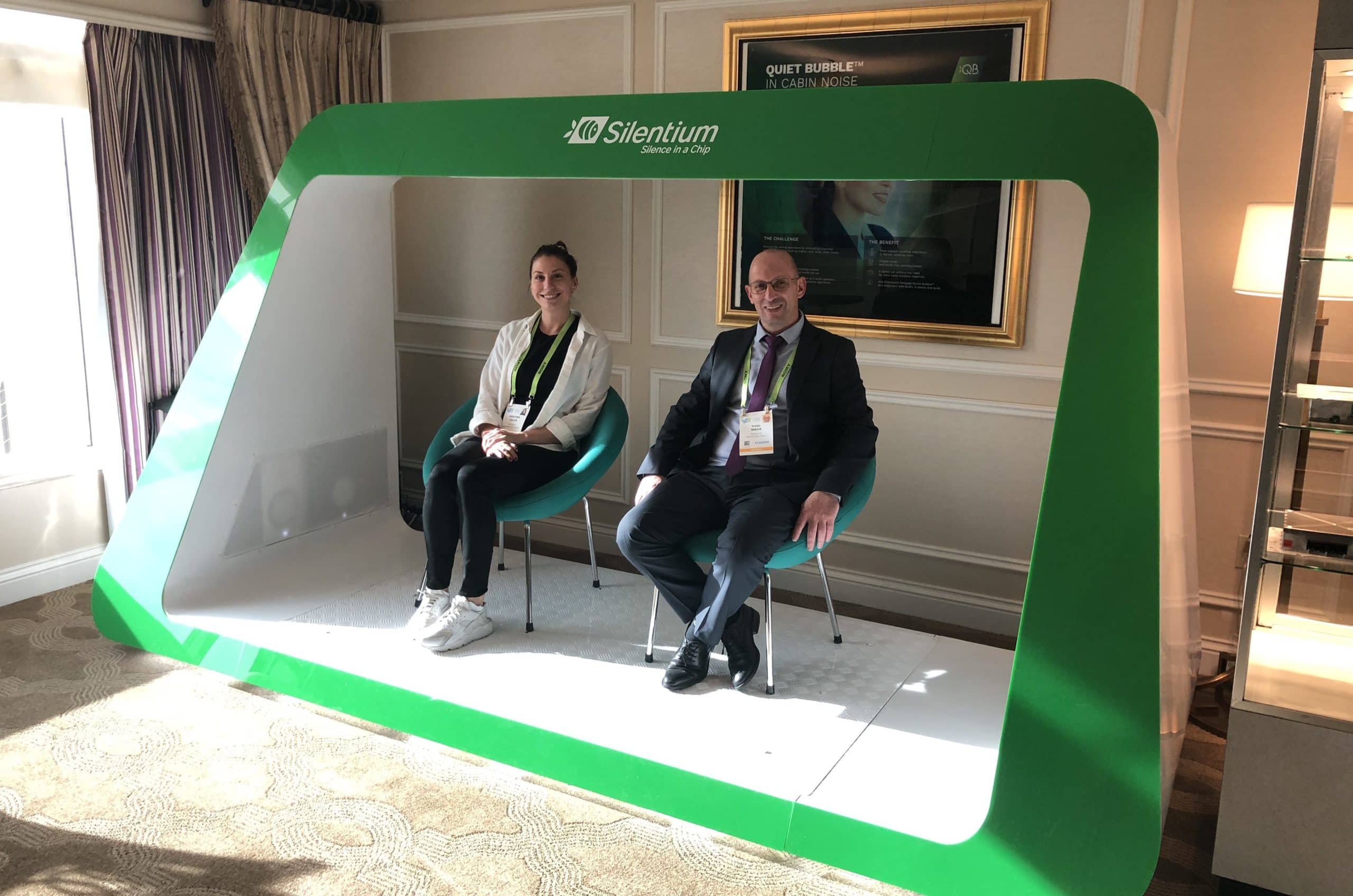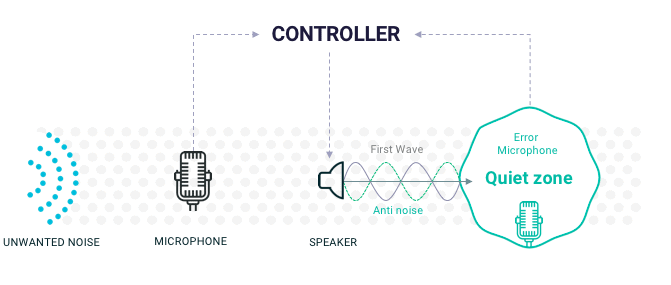Silentium Debuts Personal Sound Bubble Tech at CES
Share

At the Consumer Electronics Show today, APEX member Silentium introduced technology that could enable distinct audio zones in an aircraft.
Silentium’s Personal Sound Bubble solution facilitates focused sound transmission through speakers towards a specific location, while minimizing surrounding sound using a signal processing algorithm. In other words, passengers sitting next to each other could each listen to their choice of music without headphones and not be disturbed by their neighbors.
“Most of our competitors use directional speakers but we do it quite differently,” Assaf Goldshtein, system engineer at Silentium told APEX Media, politely refusing to divulge further details about the Tel Aviv-based company’s proprietary software.
According to senior business development manager Amir Slapak, Silentium is already in discussions with several airlines regarding its Quiet Bubble solution, which will be used in cars by early 2020. The spatial active noise reduction solution consists of software that detects sine waves and outputs opposing sine waves via speakers, cancelling up to 90% of unwanted sound.

While placing speakers in each headrest would increase performance, the technology could be integrated into an aircraft’s existing audio system to avoid adding weight. It is also an alternative to passive noise cancellation materials. “Aircraft companies invest a lot in passive noise cancellation: foams and materials that cancel the noise of the engine and the wind. These materials can be heavy and consume fuel,” Goldshtein said.
As voice recognition electronics evolve from the topic of conversation to a reality of daily life, background noise will be a barrier to the functionality of this technology, explained Yoel Naor, Silentium’s CEO, adding that research has shown noise pollution can cause fatigue and health issues including cardiovascular disease and psychological disorders.
“Silentium creates an environment that offers privacy and enables better communication. It could even allow personalized audio messages to be delivered to each passenger in an aircraft,” said Naor. “Plus, you may find that if your flight were less noisy, you would arrive at your destination feeling more relaxed.”


